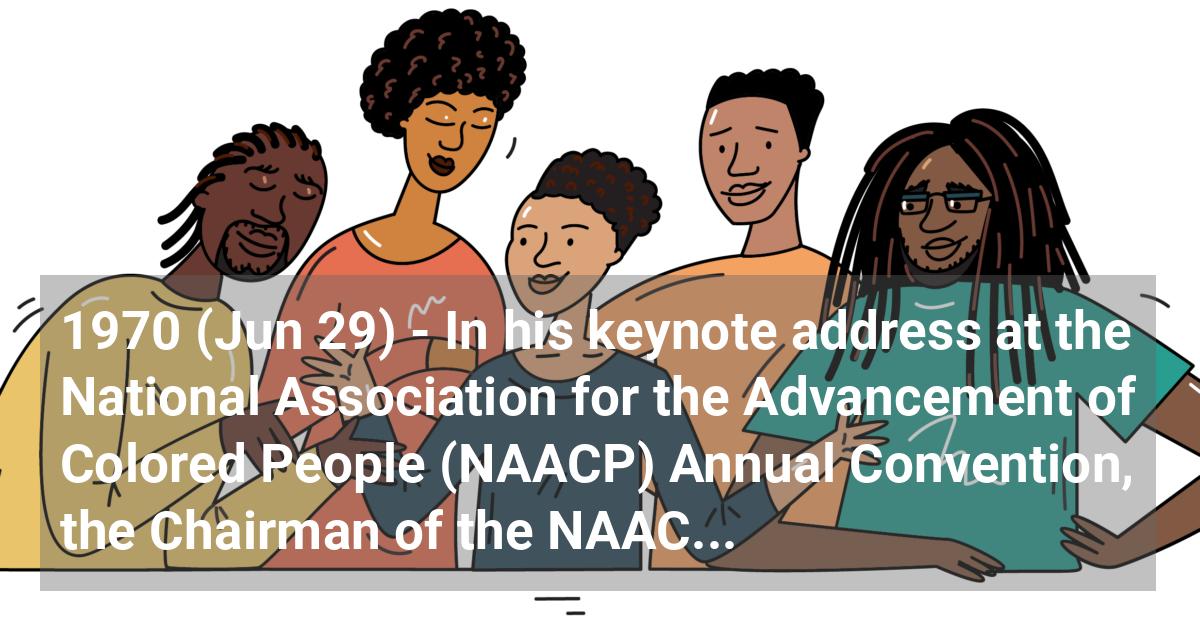Home / Full timeline / In his keynote address at the National Association for the Advancement of Colored People (NAACP) Annual Convention, the Chairman of the NAACP’s Board of Directors, Bishop Stephen Gill Spottswood, charged the Nixon administration with being “anti-Negro” and accused it of implementing a “calculated policy to work against the needs and aspirations of the largest minority of its citizens.” The Nixon administration calls the charges “disheartening.”
 In his keynote address at the National Association for the Advancement of Colored People (NAACP) Annual Convention, the Chairman of the NAACP’s Board of Directors, Bishop Stephen Gill Spottswood, charged the Nixon administration with being “anti-Negro” and accused it of implementing a “calculated policy to work against the needs and aspirations of the largest minority of its citizens.” The Nixon administration calls the charges “disheartening.”
In his keynote address at the National Association for the Advancement of Colored People (NAACP) Annual Convention, the Chairman of the NAACP’s Board of Directors, Bishop Stephen Gill Spottswood, charged the Nixon administration with being “anti-Negro” and accused it of implementing a “calculated policy to work against the needs and aspirations of the largest minority of its citizens.” The Nixon administration calls the charges “disheartening.”
1970 (Jun 29)
The Chairman of the NAACP's Board of Directors, Bishop Stephen Gill Spottswood, charged the Nixon administration with being "anti-Negro" and accused it of implementing a "calculated policy to work against the needs and aspirations of the largest minority of its citizens." In his keynote address at the NAACP Annual Convention in Cincinnati, Ohio, Spottswood indicted the administration for retreating on school desegregation and nominating conservative Southerners Clement Haynsworth and G. Harold Carswell to the U.S. Supreme Court. Spottswood also condemned the exposed memo to the president that called for "benign neglect" of race issues. The statement marked a significant break between the largest and oldest Black civil rights organization and the national administration. Because of this, and the NAACP's reputation as a moderate organization, the administration quickly responded, calling the charges "unfair" and "disheartening," and pointing to positive contributions such as the administration's support of the extension of the Voting Rights Act of 1965.
References:
- • Hornsby, Alton. Chronology of African-American History: Significant Events and People from 1619 to the Present. Detroit: Gale Research, 1995.
